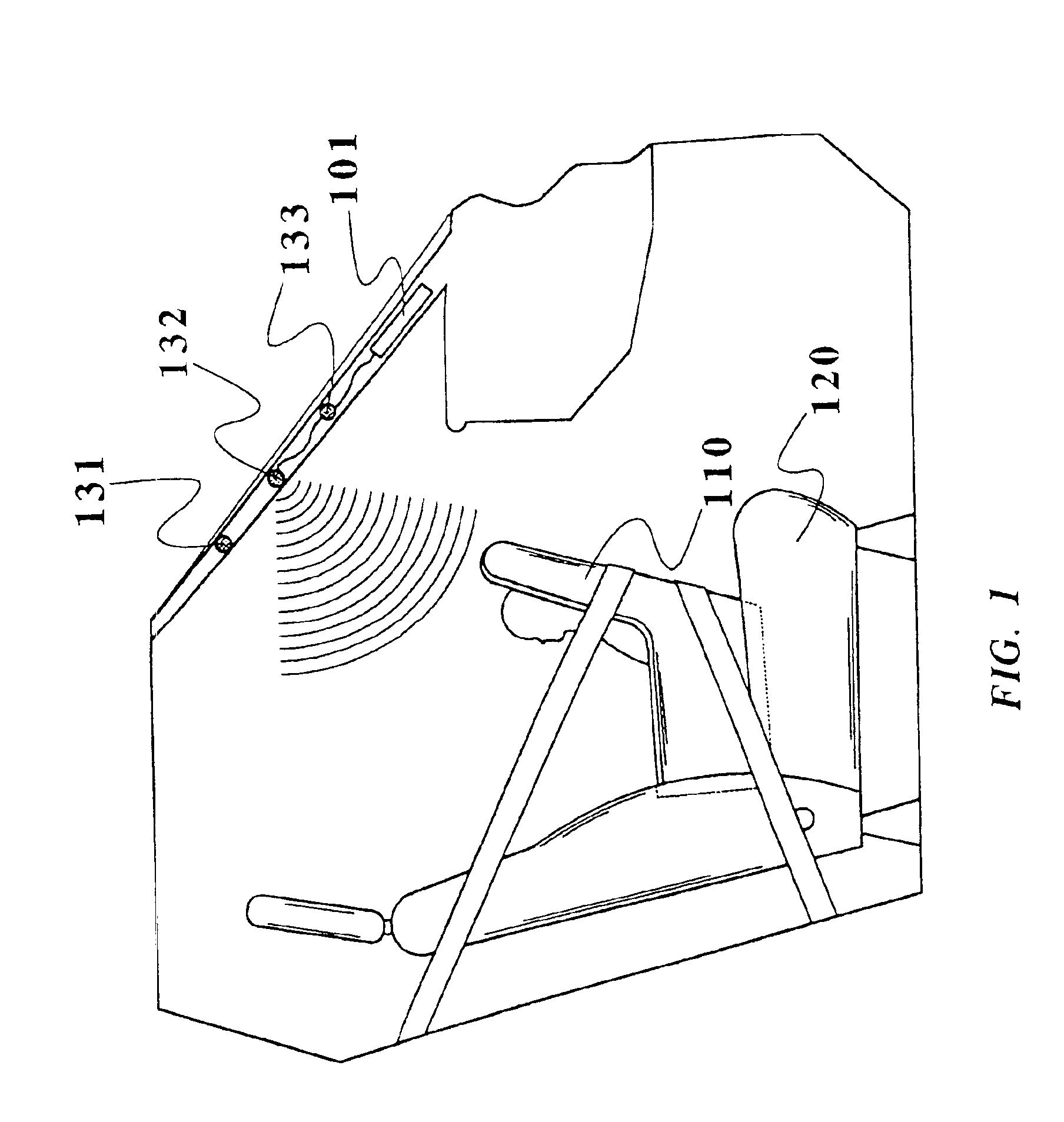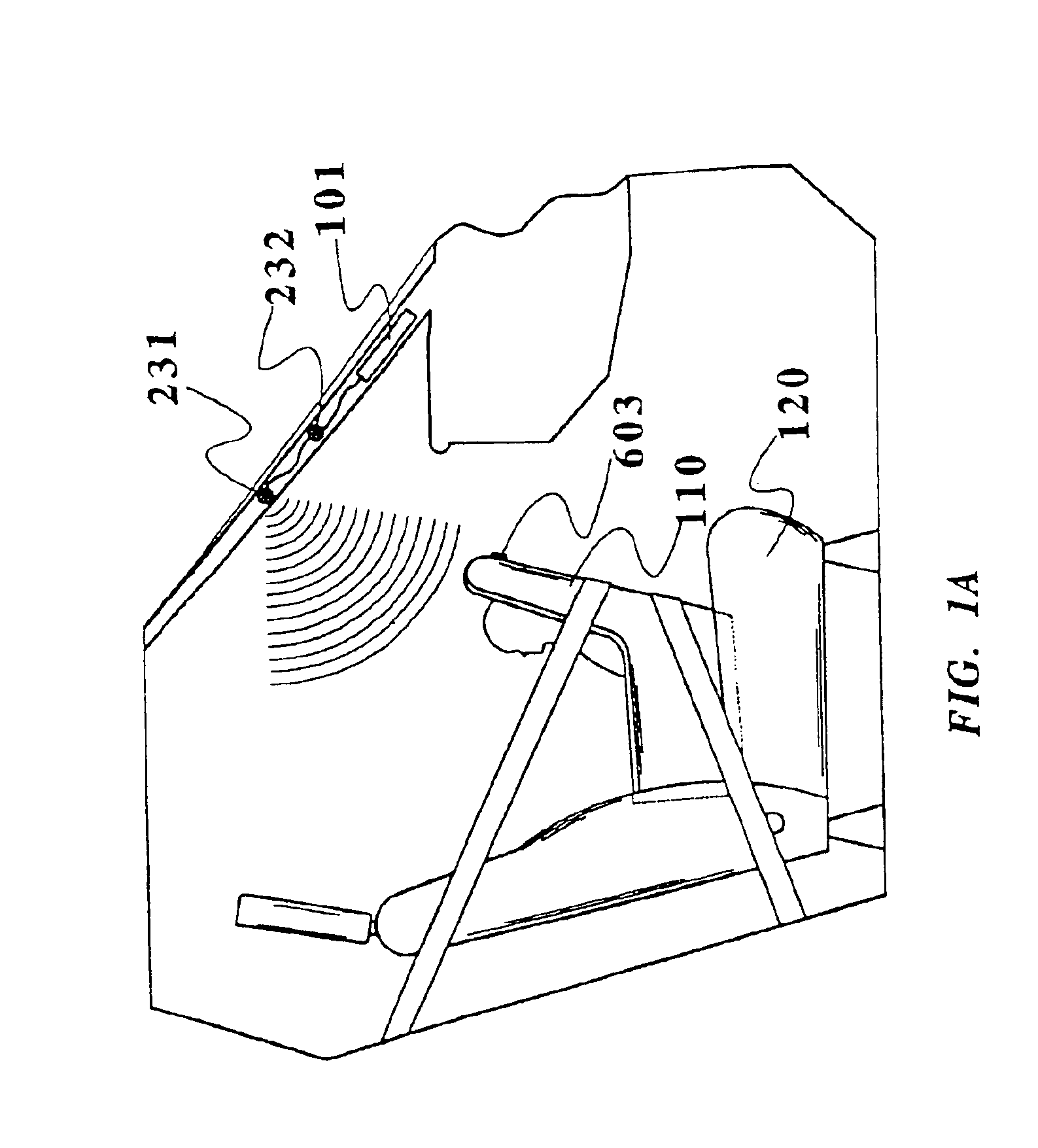Method and arrangement for obtaining and conveying information about occupancy of a vehicle
a technology for obtaining and conveying information and vehicles, applied in vehicle seats, pedestrian/occupant safety arrangements, vehicle seats, etc., can solve the problems of high cost of replacing airbags, child in rear facing child seats, right front passenger seats, etc., to reduce the intensity of light striking, improve sound quality, and reduce the intensity of light reflected
- Summary
- Abstract
- Description
- Claims
- Application Information
AI Technical Summary
Benefits of technology
Problems solved by technology
Method used
Image
Examples
Embodiment Construction
[0116]Referring to the accompanying drawings wherein the same reference numerals refer to the same or similar elements, FIG. 1 is a side view, with parts cutaway and removed of a vehicle showing the passenger compartment containing a rear facing child seat 110 on a front passenger seat 120 and a preferred mounting location for a first embodiment of a vehicle interior monitoring system in accordance with the invention. The interior monitoring system is capable of detecting the presence of an occupant and the rear facing child seat 110. In this embodiment, three transducers 131, 132 and 133 are used, although any number of wave-transmitting transducers or radiation-receiving receivers may be used. Such transducers or receivers may be of the type which emit or receive a continuous signal, a time varying signal or a spacial varying signal such as in a scanning system. One particular type of radiation-receiving receiver for use in the invention is a receiver capable of receiving electrom...
PUM
 Login to View More
Login to View More Abstract
Description
Claims
Application Information
 Login to View More
Login to View More - R&D
- Intellectual Property
- Life Sciences
- Materials
- Tech Scout
- Unparalleled Data Quality
- Higher Quality Content
- 60% Fewer Hallucinations
Browse by: Latest US Patents, China's latest patents, Technical Efficacy Thesaurus, Application Domain, Technology Topic, Popular Technical Reports.
© 2025 PatSnap. All rights reserved.Legal|Privacy policy|Modern Slavery Act Transparency Statement|Sitemap|About US| Contact US: help@patsnap.com



